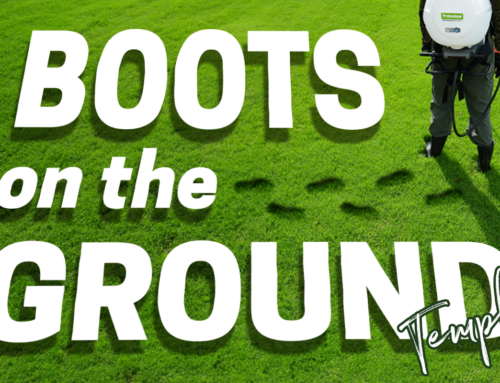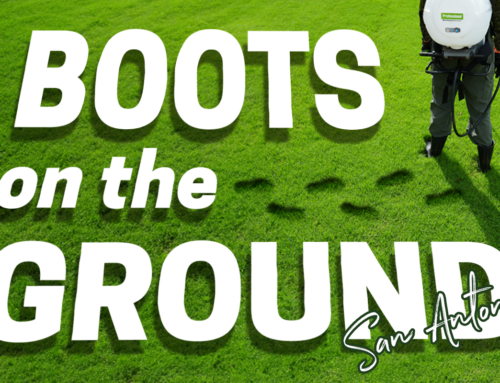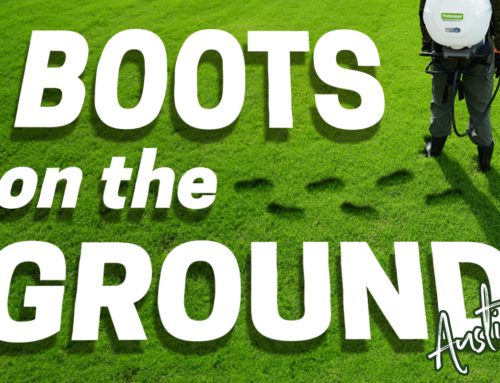Weeds. Weeds. Weeds.
Seems like you can’t escape them. In Texas, we have two main types of weeds, broadleaf and grassy. They are difficult to handle and to treat. We also have some subcategories of weeds – annual or perennial. Obviously, the perennial are hardest to get rid of because they live the longest and keep returning, but we, at Emerald Lawns, are experts at all levels of weed control and will give you some information and some tips on how to spot the weeds. Once you’re aware of what you’re working with, you can call the cavalry (us) in to get rid of those pesky weeds.
Broadleaf weeds
In this part of our web site, we delve into three of the most common broadleaf weeds in Texas: henbit, dandelion and thistle. Now, we’ll add chickweed and purslane to the party.
Henbit – A winter annual that blooms in early spring. Henbit is very plentiful in Central Texas. Henbit’s leaves are rounded with notched edges. They grow every inch or so on a square stem. The stems are weak so the longer the weed grows, the less stable its foundation is. It is purple in color at the very top of the plant.
Dandelion – Due to its seed-head, the dandelion is easily recognizable. Coming from the French name dent de lion (lion’s tooth), the flower has a unique look. People like to blow the seeds, especially children so they take root in a lot of lawns. The leaves grow close to the lawn in a star-shaped pattern. In bloom, the flower is yellow. You will usually see them in spring to early summer. They are a biennial or perennial bloom.
Thistle – has a rapid growth rate and it can get very tall. If you don’t deal with it, it can grow several feet high and about a food wide, taking up a bit of space in your lawn. When it’s young, it resembles a dandelion except that it’s purplish in color and the leaves have long spines on them. They also have hairy, jagged edges. Butterflies and other insects love this woolly biennial or perennial and will often eat from it.
Chickweed – is an annual broadleaf and it germinates in the fall. It grows during the winter, produces seed and dies by early summer. It’s actually an herb and is named the way it is because it’s a favorite food of chickens. Chickweed grows to about 8 inches high and the plant can mat together to about 16 inches. The leaves have smooth edges and are no more than 1 inch long. They always grow in pairs, directly opposite each other on the stem. The stem isn’t smooth. It has hairs covering the entire length. The flowers are small, about 1/8 inch across and are white with five petals, giving them a star shape.
Purslane – tends to appear after the soil warms in late spring or early summer. It’s common in rich, fertile soil. The succulent stems and leaves stay close to the ground. Young leaves and stems are edible. The tiny flowers at the stem tips quickly give way to seedpods. Purslane seeds can persist in soil for years, making them a perennial. It is heat and drought tolerant. It’s known as the Dolly Parton flower because it blooms from 9am to 5pm. The colors of the stems are tinted red. They’re also round. The leaves are paddle-shaped, flat and alternately arranged.
Grassy Weeds
We also discussed some grassy weeds here. Grassy weeds are probably harder to identify than broadleaf weeds because they are similar in look to regular turf grasses. We will contend with Poa Annua, aka Bluegrass as well as Crabgrass and Goosegrass.
Poa Annua (Bluegrass) – is one of the most commonly seen grassy weeds in Central Texas. It usually appears during late winter into early spring. It seeds itself nonstop, making it especially difficult to get rid of, and one plant can put thousands of seeds across your lawn with the help of a pet or even a lawnmower. If you have Bermuda or zoysia grass, this weed can be controlled before and after it has germinated. With St. Augustine grass, you have to catch it before it germinates. The most common bluegrass in our area is an upright type with a bunch-type growth pattern. It’s an annual and survives in soil where moisture is abundant. When seed heads appear, they give a yellow-ish, white color to the lawn and an uneven appearance.
Crabgrass – this annual is one of the most hated weeds because it can hold many seeds that can stay dormant for a long time. It can pop up even in the best cared-for lawns. The seeds have to have light to germinate. It starts to show up in spring and dies during the winter. Soil aeration may actually help crabgrass to grow since it needs the light and air that this procedure brings. There are two species of crabgrass found in the temperate and semi-tropical areas of the US. There’s a smooth crabgrass and hairy crabgrass. Once crabgrass germinates, it rapidly dominates a turf. It grows faster than regular turf grasses and can easily overtake a lawn. It can also grow in drought and other conditions where regular turf grasses suffer.
Goosegrass – is troublesome throughout the South. It is most frequently found in high traffic areas where the turfgrass cover is thin like athletic fields and golf courses. Also known as silver crabgrass, wirefoot or crowfoot, this warm season annual develops in leafy, commonly reclining tufts. It seeds prolifically and once it’s in a lawn, annual infestations are likely to occur. Mature leaf blades are very hard to cut with a mower. They’ll often become frayed by it and develop a whitish cast. Keep mowing blades sharp to cut goosegrass-infested lawns.
To have us remove your weeds, call us today at 512-990-2199. We’ll be happy to come out and perform that service for you.






